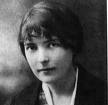
The Journal of the DH Lawrence Society of Australia
ISSN No: 1039-9658
www.cybersydney.com.au/dhl
KATHERINE MANSFIELD: DH LAWRENCE'S "LOST GIRL"
A Literary Discovery
by
SANDRA JOBSON DARROCH
© 2009
 |
 |
 |
Though founded on mutual recognition and respect, the relationship between Katherine Mansfield and D.H. Lawrence was a fraught and fractured one. From the time they first met in 1913, Lawrence found Katherine interesting and intelligent - and also a potential literary object. It is well-known that he drew on her for part of the character of Gudrun in Women in Love. A major point of this essay is my finding that he portrayed her, more significantly, in another novel: The Lost Girl.
|
ON AUGUST 11, 1922, D.H. Lawrence and his wife Frieda left Sydney aboard RMS Tahiti en route to America, New Mexico and Taos. Their first port-of-call was Wellington, New Zealand…'four days over a cold dark, inhospitable sea'1. Lawrence, after he arrived in Taos, composed a cursorily-fictionalised account of this brief stop-over. He appended it at the end of the first typescript (TS1) of Kangaroo (later discarded, but now referred to as the TS1R ending):
This incident offered
Lawrence little reason to like New Zealanders. However, there
was one New Zealander he had a high regard for: Katherine Mansfield,
to whom he sent a postcard from Wellington.
|
adventure - he had written to their mutual friend, the Russian exile Koteliansky: 'If you were here you would understand Katherine so much better. She is very Australian - or New Zealand. I wonder how she is.' 4 Before examining the
significance and fruits of Mansfield's and Lawrence's relationship,
it is useful to recall the course of their interaction, for it
was out of this that the literary produce came.5 They met at a
critical moment in their all-too-truncated lives. Although both
had shown promise as writers, as individuals they were outsiders
in the post-Victorian London literary and social scene. Lawrence
had risen out of the coal-dusted mining tenements of Nottinghamshire;
she had, quixotically, fled distant, provincial New Zealand to
try to establish herself as a writer in London. They shared a
number of things, as Katherine later acknowledged: 'I am more
like Lawrence than anybody. We are unthinkably alike, in fact.'
6 click here to turn to page 2
|